- Learning time
- 10 minutes
- First play time
- 40 minutes
Twice as Clever
Designed by: Wolfgang Warsch
Twice as Clever (often seen as Doppelt So Clever) is a puzzle game for 1-4 players where you roll dice, and choose which colour/number die to mark off on your individual sheet. Everyone has a sheet each, and players take turn being the active player – who does the dice-rolling.
If you’re the active player you roll three times, and with each roll, choose one die to take: crossing off the matching number and colour on your sheet, or writing in the number value in an available space. A yellow two: cross off the yellow two! A pink five: write 5 in the next available pink space. The amount of numbers you’ve crossed off in each of the five sections on your sheet dictate how many points each section is worth at the end of the game. Easy!
But a few things make it much more puzzley than it first appears. First, any die you take doesn’t get rerolled on your second or third roll. Secondly, any dice that have a lower value of the die you take become unavailable to you as well – they get put on a ‘platter’ (the box insert) instead. The numbers you cross off score in different ways, too: the silver area scores each row of numbers, with more crossed off the better. The green area scores 1 value minus annother, and both values get multipled when you write them in: the sheet itself tells you by how much. The pink area just scores the sum total of all the numbers in it, and the blue and yellow areas both score depending on how many numbers are crossed off in total – which ones doesn’t matter. But the blue die value is always added to the white die value, and any number you write in must be equal or lower to the previous entry. The yellow has no such restriction, and generates potentially enormous scores – with the catch that every number needs to be crossed off twice to contribute to scoring.
Finally, each area is liberally splattered with potential bonuses for filling in or crossing off a space, so it’s possible – and indeed likely – that towards the end of the game writing in (or crossing off) a number triggers one bonus, which triggers another, and maybe another, and so on: free crossings-off or numbers, free dice-rerolls, free ‘extra dice’ or the reclaim ability: to bring dice back off the platter, and available to roll again.
The inactive players also have something to think about – when the active player has taken all three dice, they can choose one die for themselves from the platter.
After a set number of rounds (depending on number of players) points are totalled with the highest score the winner. Note that some bonus spots are fox heads: these don’t trigger anything during play, but in scoring every fox-head you’ve ticked off will score the value of your lowest scoring area on the sheet.
The guru's verdict
-
Take That!
Take That!
None
-
Fidget Factor!
Fidget Factor!
Moderate - high, depending on player count. Even once you've gotten your head around the relatively simple rules, the path to most points is rarely clear. Playing solo, you're always active, but with four - even factoring in the platter dice when it's not your turn - there is a fair bit of watching someone else think about their best option.
-
Brain Burn!
Brain Burn!
Low on rules; high on decisions.
-
Again Again!
Again Again!
Maybe best experienced solo or with two, Twice as Clever is a mini-masterpiece of addiction; offering enough deep decisions in relatively brief play and seeding in the tiny dopamine hits of ticking off those bonuses.

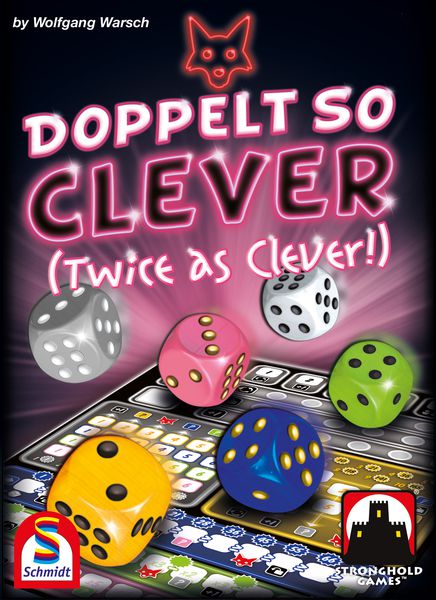
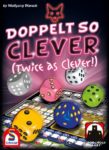
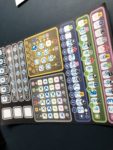
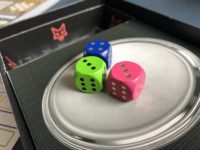
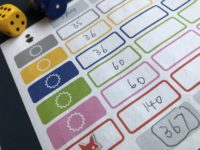


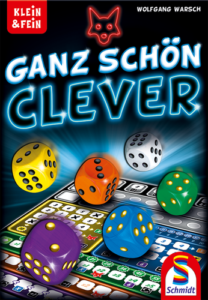
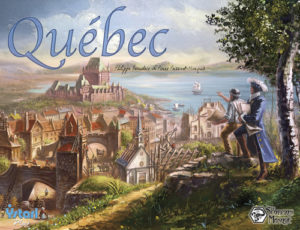

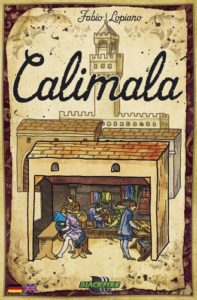
Sam says
Perhaps not twice as clever as its predecessor, Doppelt So Clever nonetheless offers an even more puzzley challenge of finding the way to generate the most points out of some random dice rolls. It's not a game I reach for with a bunch of people around a table, but as a head to head challenge or a solo attempt, it's a fun and engaging way to spend 20 minutes. There's always a temptation to have just one more go...